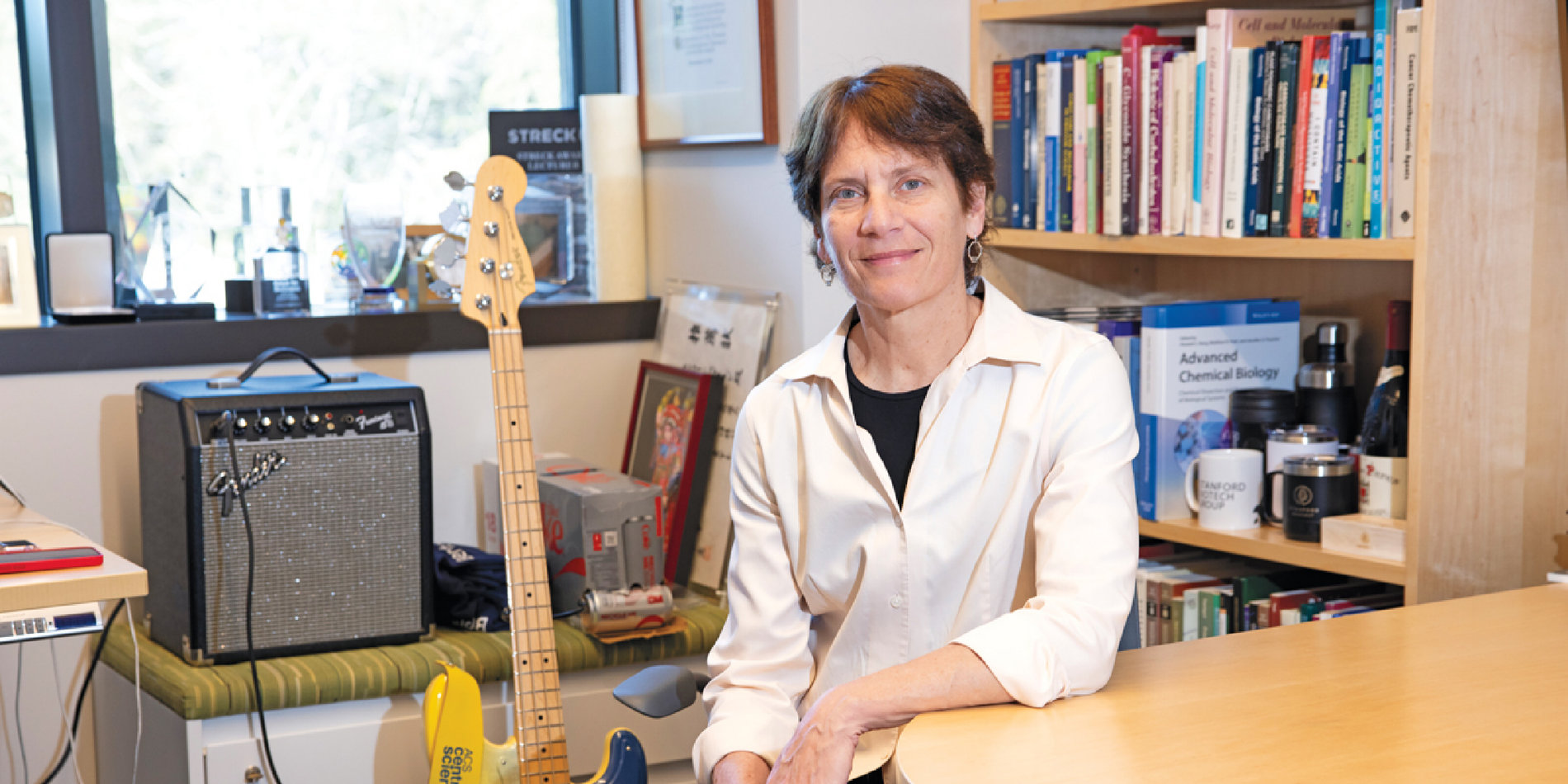New tool helps researchers watch gene editing in living cells
Many researchers put their faith in CRISPR gene editing, but they know that CRISPR techniques, though powerful, sometimes miss their intended targets. They haven’t had a good way of catching these potentially dangerous mishaps but now, Stanford scientists have made it possible to monitor these mistakes as they happen.
In a paper published September 20 in Science, Stanford ChEM-H Institute Scholar Stanley Qi, assistant professor of Bioengineering and Chemical and Systems Biology, and colleagues report that they have developed a method to watch what happens in real time to strands of DNA during CRISPR-Cas9 gene editing. The technique, which involves modifying existing CRISPR tools, allows scientists for the first time to visually track DNA as it gets cut in living cells. Now, they can watch the CRISPR process and potentially check for errors as they develop over time.

“This technology brings gene editing imaging into the fourth dimension, time,” said Qi. “This temporal information could act as a safeguard. When we edit a document on a computer, we have real-time spell check. In a similar concept, with our new technology we could better understand the gene editing process and ensure that individual cells have been edited properly.”
A tale of two Cas9s
Traditional methods to analyze DNA inside cells can be harsh, requiring researchers to kill the cells in the process and preventing them from getting information about the history or future of that piece of DNA.
The key to making this live cell method work is engineering and repurposing the CRISPR-Cas9 toolbox, which comprises two main parts. First, there’s Cas9, a large enzyme that binds to and cuts each of the two DNA strands. The other key component of the CRISPR toolbox is the guide RNA, which sticks to the Cas9 and, like a postal address, helps bring Cas9 to the bit of DNA researchers want to edit.
In the new study, the researchers used two versions of Cas9, a standard gene editing version and a second imaging version that has been modified in two ways. First, it is deactivated so that it binds to but doesn’t cut DNA. Second, it carries with it a guide RNA marked with a green fluorescent tag that glows brightly when activated under a fluorescence microscope.
The team then put these two Cas9 versions into cells that contained a second, red fluorescent dye that accumulates around DNA as it breaks. As they did, green spots appeared at the targeted section of DNA, and red dots showed up in the same place when gene editing began. The method, Qi said, allows them to watch not only when a strand is cut but also see how many times that strand gets cut, repaired, and then cut again in a cell, all by tracking green and red spots.
Seeing is believing
The Cas9 imaging platform can serve as a scaffold to study different genes or different events in the editing process. One such example: editing two genes at the same time. That’s important because a lot of diseases are caused by several mutations in more than one gene. If scientists try to cut multiple genes at the same time, they could encounter problems with translocation, when one gene fragment joins up with a fragment from a different gene instead of the one it was initially bound to. Though such events can be difficult to track with traditional methods, the researchers showed that they could watch translocation happen in real time.
To show that was possible, Qi and colleagues first created two imaging Cas9s, one red and one green, that would attach to two different genes. Then, they added editing versions of those Cas9s that would cut the DNA in the nearby spots. In some cases, the researchers watched as the red and green dots – corresponding to two different genes – moved independently, then overlapped and moved together, indicating that an undesirable translocation event had occurred.
Being able to visualize translocations could allow scientists to determine which methods minimize these events and opens the door to diagnosing different genetic disorders linked to translocations.
“Seeing something in action is really exciting. We’re seeing gene editing happen, seeing translocation happen in real time in living cells,” said lead author Haifeng Wang, a postdoctoral scholar in Qi’s group. “Seeing is believing.”



